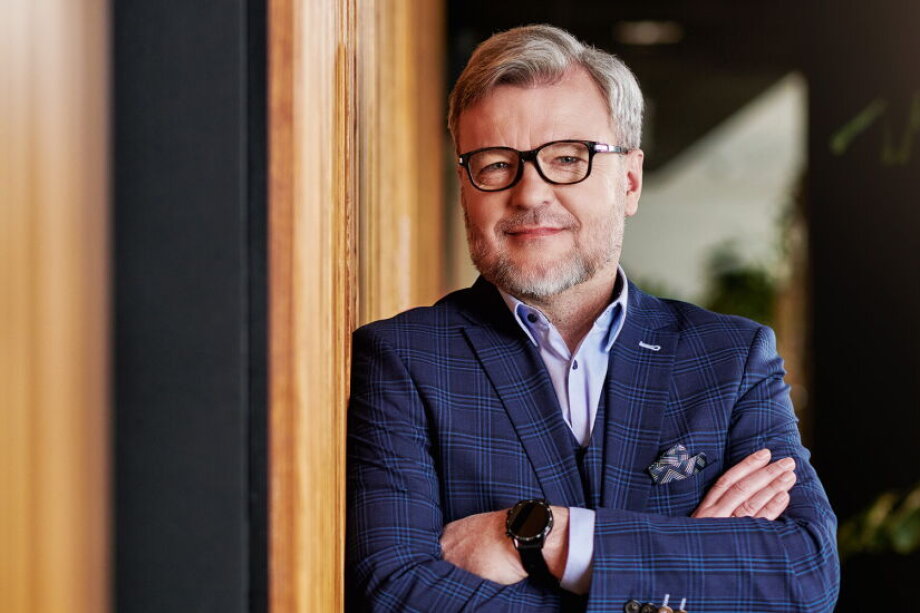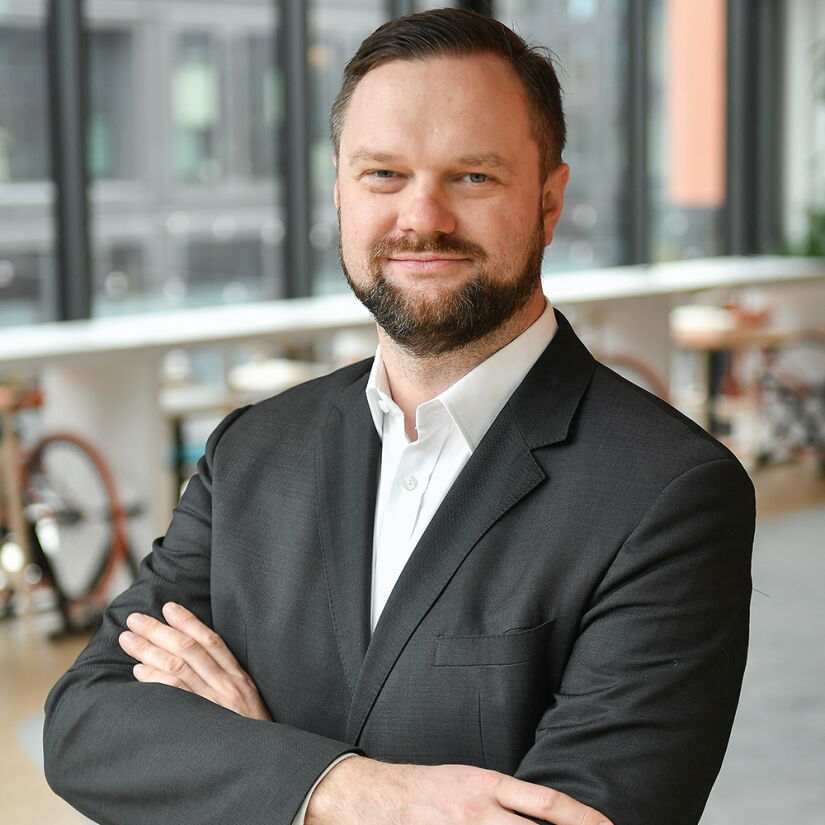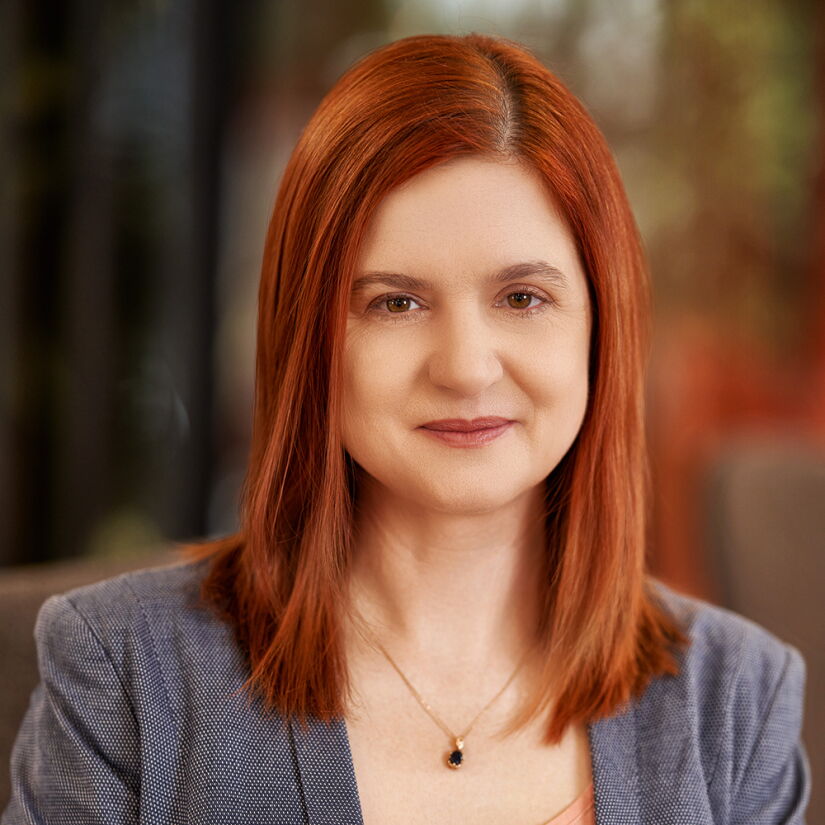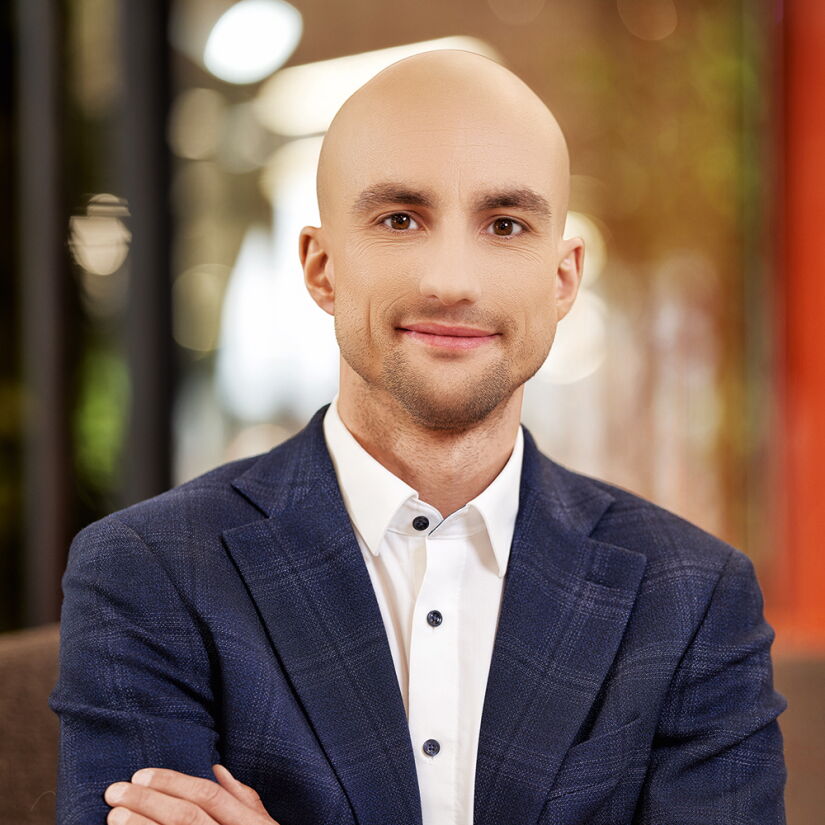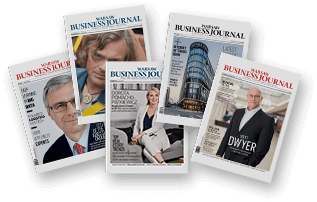From 50 to 400: How a Poland-based risk modelling hub became a global powerhouse in just 5 years
Cross location collaboration, milestones, hot topics
It has been five years since the launch of Risk Hub at ING Hubs Poland. Can you tell us about the journey, the development, and the challenges over the years?
We initially started mid 2019 with 50 people and an exploratory project. ING Hubs Poland at that moment were mostly technology focused, having limited risk modelling experience.
Before we started, we investigated various global locations to determine where such services could be developed. Through market analysis, we made sure we were well-prepared. But our primary goal was to build trust by demonstrating our capabilities, by recruiting the right talent and delivering on services that met with internal partners’ needs within regulatory requirements.
Since then, we’ve grown rapidly, and now boast a workforce close to 400 and from over 30 countries, creating something that’s truly international. We’ve diversified our services to encompass data management, tooling, modeling and validation. One of our key strengths is our ability to provide end-to-end solutions, which I think sets us apart.
We’ve built strong relationships with our Headquarters in the Netherlands, but also with various global units, which is reflective of our reputation overall. What’s more, the expansion has made it necessary to restructure, to organize in a way that is both effective and fast-evolving.
It’s our fifth anniversary this year, and so when I look back the recognition we’ve received, the eagerness of other global units, who were happy to work with us, it is obvious we were doing it right. The quality of our people and the services has just been outstanding.
Looking forward, what is your vision for the future of the Risk Hub and the business you will develop, especially in the context of a fast-changing external environment?
Our primary goal now is to take more ownership of the services and products we develop. Our aim is to increase our influence over both what we do and how we do it.
We’re also expanding our collaborative efforts with teams in the Philippines and Turkey, which aligns with ING's global sourcing strategy.
For us it’s important to become a center for knowledge transfers. With our international experience and diverse operations, we are well-positioned to provide training and development programs across ING worldwide. This includes ensuring high-quality models and well-structured data, but also sharing knowledge and leadership within the organization.
In the future, we plan to boost our global mobility by increasing short and long-term assignments to different locations. That way we can enable local talent and improve our global skills.
How does Risk Hub align its strategic vision with the broader objectives of the ING Group? Is innovation driven from within the Risk Hub or does it primarily come from requests by the Group?
The risk domain is crucial for any organization, especially financial ones, and every employee at Risk Hub plays a part in risk management. Large projects, such as developing and validating rating systems, are key focuses. Risk Hub is essential to this process, meeting the expectations of stakeholders, the management board, and regulators.
Innovation is driven both internally and through group requests. As one of the largest modeling centers, Risk Hub demonstrates significant scale and impact within ING. We continue to grow (although at a lower tempo), transitioning from simple, labor-intensive tasks to knowledge and expertise intensive work. This shift emphasizes our investment in talent and expert knowledge, which will drive our future development.
You employ many experts from different nationalities. Is it still feasible to find the necessary talent in Poland, and what type of work model do you apply?
Finding the right talent is challenging, especially as we seek individuals with strong data skills and an understanding of financial regulations. Our international aspect aids in this, as we employ colleagues from Asia, South America, and Africa. The reputation we’ve built over five years helps attract talent willing to make bold moves to join us in Poland.
International employees bring diverse perspectives and cultures, enriching our team and offering new ways of working. Integration is key. We ensure all employees feel part of the organization and have a platform to voice their needs through different initiatives. We have, for example, our dedicated Diversity Group – Culture Group, which implements initiatives aimed at supporting employees from other countries during the onboarding process and throughout their career journey in Poland.
Overall, our employee value proposition centers on creating a truly international environment in Poland, where diverse talents can thrive and contribute effectively.
Paweł Holnicki-Szulc
Business and Risk Solution Cluster Lead at ING Hubs Poland
For over four years Paweł has worked with ING Hubs Poland as Director of the Business & Risk Solutions Area. He is the creator of new services such as KYC (Know Your Customer) and modeling, risk validation for ING Group units. He has over 20 years of international experience in business development, sales and services in financial and insurance institutions. He is a valued speaker and panelist at various international events and conferences.
Risk modelling revolution: AI, data security and ESG innovation
Data quality assurance: Risk Hub’s five year journey
You were part of the opening of the Risk Hub. How have your ambitions and visions for the project been fulfilled over the past five years?
We exceeded everyone's expectations, including mine. Initially, we expected a team of about 80-100 people, but now we have more than 400. This growth was driven by our successful project deliveries.
Over the years, we’ve taken on a more global role, not just acting as an outsourced contractor. We now have product and expert leads in Poland, and we coordinate between international teams, including those in the Philippines, Turkey, and central ING Hubs.
We expect even more global roles in the future, including Global Tribe Lead for the entire Risk Data domain. This progression underscores our significant contributions and the successful fulfillment of our initial ambitions.
Banks and financial institutions are under stringent compliance regulations to ensure data quality and protection related to customers and systems. How does Risk Hub ensure it meets these demands and adapts to evolving regulatory requirements?
Risk Hub operates within a rigorous regulatory environment, particularly focused on credit risk and regulatory capital models, where 80-90% of our work is driven by regulation. Our approach to compliance is multifaceted and begins with robust data governance frameworks. We ensure comprehensive understanding and management of data handling steps, supported by strong data quality controls. These controls are continuously evolving in order to meet changing regulatory expectations, particularly those from the European Central Bank (ECB), which emphasizes data quality and correction of issues that need remediation.
We structure our teams to integrate regulatory compliance seamlessly into our operations. This involves design- ing processes that embed regulatory requirements by default, rather than as an afterthought.
Investment in our team's skill set is crucial. We employ individuals who not only have technical expertise but also a deep understanding of regulations. These experts can translate complex regulatory requirements into practical steps we can follow within the Risk Hub. Furthermore, it is essential to have the ability to communicate well in our field, particularly in interactions with regulators. Concise and precise communication helps prevent misunderstandings and ensures we comply without issue in our operations.
ING adheres to the highest global regulatory standards, including those of the ECB, Polish standards (KNF), and all requirements from markets like the US. This means our operations must meet or exceed all applicable standards. Risk Hub ensures effective risk management and upholds all regulatory standards across jurisdictions.
What are your observations regarding the development of data and cyber security over the past five years? Are AI tools and systems enhancing the bank's ability to manage these aspects more effectively?
Data and cyber security have become increasingly important, particularly regarding data leakage protection and data access controls. While Risk Hub primarily deals with anonymized or non-personal data, there has been a significant emphasis on tightening rules for accessing data, even extending to internal documentation and preventing insider trading. This heightened scrutiny ensures that sensitive information about performance and client data remain protected.
AI tools, especially in cybersecurity, have seen a bump in interest. However, the broader application of AI, particularly generative AI, is more complex. Generative AI is treated as anew model type, introducing unique risks that need to be integrated into the bank's overall risk management framework.
We are exploring several AI-driven initiatives to enhance our data management capabilities. One promising area is using AI to understand and map data structures, data flows, and attribute definitions, helping our experts build a complete knowledge base. This can streamline data sourcing and transformation processes.
In summary, while we have implemented stricter data security measures and are leveraging AI for internal efficiencies, we are also mindful of the risks posed by new AI models. Our focus is on carefully integrating these technologies.
What are the newest models and systems you are developing, and how will they benefit both the bank's customers and the company itself?
ESG is gaining significant attention from business, regulatory, and those companies with socially responsible business practices. We are currently developing models related to ESG (Environmental, Social, and Governance). A key area of interest is a client’s environmental risk, particularly as it is linked to a client’s physical location, and their collateral. When making decisions on credit risk, it is crucial to know about these threats to physical infrastructure and assets as well.
Recently, the ECB conducted an inspection into ESG practices at ING. We were the first bank inspected for ESG. The inspection, completed a few weeks ago, concluded that we maintain a strong performance when it comes to ESG reporting and model building. ING's reputation for offering green loans, and our proactive stance on ESG compliance, have set benchmarks for the European banking industry.
Konrad Wypchło
Data & Tools Tribe Lead at ING Hubs Poland
Konrad’s specialty is building effective teams from scratch and quickly. He combines business knowledge, technical expertise and management skills to design and deliver solutions for international clients. He plans and executes business strategies with developing businesses to help design and build agile organizations. He helps create relationships, build and lead teams, and helps supervise and manage products and projects.
Empowering talent and innovation: shaping the future of risk management and education
Educational aspects (sharing knowledge with ING colleagues and students, and a Risk Modelling Challenge)
How is Risk Hub helping ING ensure robust risk management practices?
Risk Hub plays a crucial role in ensuring robust risk management practices by overseeing the entire model life cycle. This cycle includes preparing data, developing a model, validating data independently, implementing solutions, and a process of continuous monitoring. By managing all these phases within a Risk Hub, we maintain a cohesive perspective, allowing us to identify and address any issues effectively.
We work closely with the headquarters, participating in leadership teams and collaborating on global guidelines, policies, and methodologies. This collaboration ensures that our practices align with and contribute to the broader ING group’s standards.
Being part of a global team, we help develop and refine methodologies and guidelines that benefit the entire organization. This integrated, cross-location teamwork enables us to maintain high standards in risk management, providing a comprehensive view and constant control over the entire process, ensuring effective risk management practices for ING.
What initiatives does Risk Hub undertake to ensure continuous education, knowledge sharing both internally and externally? What does promotion of innovation look like within the organization?
As the creator and leader of education and knowledge-sharing initiatives at Risk Hub, my responsibility is to foster an environment of continuous learning and innovation. One key initiative is the Boot Camp, which we launched in 2020 to quickly and efficiently onboard our young talent. This three-week intensive training program, led by our experts, helps new joiners integrate smoothly into the organization. Its success led to the expansion of the boot camps, with five to six editions in 2021, training over 60 new hires across various locations, during the pandemic.
The Boot Camp focuses on technical skills, particularly business modeling, and has become a regular service with several groups trained each year. We have expanded our offering to include soft skills training, recognizing the importance of these skills for those professionals who usually focus more on hard data. Currently, we provide three to four training sessions per month, covering a wide range of topics, and train hundreds of employees annually.
We organize events like the Lion’s Den hackathon to promote knowledge sharing and attract new talent. We also collaborate with universities to ensure we stay updated with the latest theoretical knowledge and research, which we then apply practically within the company. These initiatives help us maintain a dynamic and innovative environment, ensuring that our team is well-equipped with both the technical and soft skills needed to excel.
As I mentioned, we also focus on partnering with universities that align with our expertise in finance, statistics, econometrics, and AI; particularly in Poland.
How do you envision the development of Risk Hub in the coming years? What will be the key challenges, and do you anticipate further growth in the number of talented employees joining the hub?
We have very high expectations for the talent we recruit, and we do face some challenges in attracting new talent. Aside from our attractive reputation, we are actively addressing shortfalls by organizing our annual Risk Modeling Congress, which pulls in over 200 participants, including industry experts. Although the growth of our employee workforce may not be as rapid as in the previous years, we are committed to expansion and retention. We focus on internal career development, and helping employees advance from junior to expert positions within four to five years. Overall, our goal is to maintain and build up this talent pipe-line, while at the same time adapting to market conditions and fostering career growth and stability within the Hub.
As one of the leaders on Polish market in expertise for risk modeling and control, how do you perceive the situation on the workforce market in this area? What are the main challenges?
The talent pool for risk modeling and control is limited, making it crucial to offer attractive and flexible working conditions. We aim to stand out as a top employer by providing excellent working environments and benefits. Our Risk Hub is located in a prime area in Warsaw, which enhances our appeal as a desirable workplace.
Aneta Ptak-Chmielewska
Risk Hub Model Risk Management Tribe Lead
Aneta has been working for ING Hubs Poland since 2020 and is currently Director of Risk Management. She is also a professor at the Warsaw School of Economics (since 2018). Other work experience includes Bank BPH, Toyota Bank Polska and BGK.
Banking on Precision: How Risk Models Drive Innovation and Sustainability
The role of risk models in the banking industry
Can you please describe what you understand by a model, and the role of risk models in the banking industry?
In banking, a model streamlines decision-making by using assumptions, scientific methods, and data. For clients, getting a loan seems straightforward, but for ING, it involves complex processes. Risk models help us decide, for example, on loan approvals or determine necessary capital for exposures. Models automate decision-making on a large scale, allowing banks to process numerous clients efficiently and allocate assets optimally. This benefits both the bank and clients, ensuring loans are granted only when sustainable. This automation represents a new industrial revolution. Models also remove biases inherent in human decision-making, leading to more objective and honest business decisions.
Models enhance precision in comprehensive tasks like pricing complex instruments, relying on data and statistical techniques. They also offer transparency, enabling result reproduction and compliance. Additionaly, models ensure appropriate capital levels that are crucial for sector's financial stability.
Your colleague mentioned ESG modeling, can you describe your ESG model in detail and its purpose?
Our ESG strategy focuses on environmental, social, and governance-related risks. The ESG model we developed covers specifically climate risk. It materializes through severe weather events, and transition risks arise from clients shifting away from fossil fuels due to regulations, consumer preferences, investor expectations, or social pressures. These transitions can be costly, creating risk.
Together with our colleagues from ING Bank Śląski, we developed a transition risk model for ING Bank Śląski’s business banking portfolio, including SMEs and sole proprietorships. This data-driven model offers a precise risk assessment, replacing heat maps that broadly assigned risk levels by sector. Now, we can better differentiate between high and low-risk clients.
The model generates a numerical score that can be incorporated into the decision-making process, helping ING manage its transition risk exposure. This development positions us as a front-runner in transition risk management using advanced modeling.
We utilize Polish market data, including emissions data from the National Centre of Emissions Management, and information from the Polish Statistical Office. Combining and analyzing this data was challenging, but the experience gained will be shared with other ING units globally to support their efforts.
ING has a key role to play in the transition of our clients to more sustainable business. We are taking the steps to fund more and more sustainable deals but still the majority of the portfolio is not yet sustainable enough.
What ideal profiles do you seek for your team, and how do you find this talent both in Poland and internationally?
The ideal candidate holds a PhD in statistics or a quantitative field like mathematics, physics, or econometrics. They should understand regulations and banking products, aiding in data analysis and model building. This ensures models meet regulatory criteria and accurately capture risks.
Finding talented people is challenging. We build a community outside ING to stay connected with domain experts and are open global hiring, diversifying our team.
Internally, we are investing in university talent. We offer tailored courses for young professionals to prepare them for modeling challenges. Experienced team members train and mentor less experienced colleagues.
Additionally, we need good managers with banking sector experience, risk management background, and understanding of model lifecycle management. These leaders combine content expertise with management skills to inspire and facilitate knowledge sharing within teams.
How do you stay ahead with knowledge of new developments and innovations?
We leverage both internal and external sources of knowledge. Internally, ING's vast pool of expertise is crucial. We facilitate knowledge flow between departments. We interact with various units within ING, including the head office in Amsterdam and other locations.
We gain insights from our independent model validation function, which offers fresh perspectives. New joiners contribute new ideas, enhancing our knowledge base. Feedback from regulators like the ECB and KNF provides precise, often critical, input, deepening our understanding. Externally, we collaborate with consulting firms on regulatory changes, new technologies, and methods. For example, we've partnered with a quantum computing firm to explore this technology and with a consulting company to integrate geospatial data into our credit risk models.
We maintain strong ties with universities like the Warsaw School of Economics and the University of Warsaw, where our experts lecture and exchange ideas. We also organize events like the Risk Modeling Congress to discuss the latest developments in risk management, including ESG and AI impacts.
Lastly, our culture of openness and feedback ensures we continuously improve and develop new ideas by following the “Radical Candor” approach, which encourages open challenge and collaboration.
Łukasz Światowski
Risk Hub Model Development Tribe Lead at ING Hubs Poland
With over a decade of experience at ING, Łukasz began his journey in risk management and model development across various ING units, including HO Amsterdam, ING Spain, and ING Bank Śląski. In 2019, he joined Hubs Poland to establish risk modeling-focused services. Prior to his time at ING, he worked in assurance services at PwC.
Currently, he leads a team of model developers specializing in credit, market, and operational risk modeling. His responsibilities include defining team strategy, shaping organizational structure, managing key stakeholders, and overseeing team and service development.
